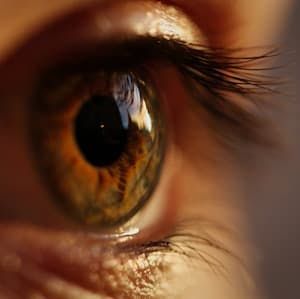Levosulpiride Improves Visual, Structural Outcomes in Center-Involving DME, Study Finds
New phase 2 study findings link levosulpiride treatment for 8 weeks with improved visual and structural outcomes and no significant adverse side effects.
Credit: Marc Schulte/Pexels

New phase 2 study results suggest oral levosulpiride for 8 weeks in daily practice improved visual and structural outcomes in patients with center-involving diabetic macular edema (DME).1
According to the investigative team, the mechanisms of action may include the downregulation of vascular endothelial growth factor (VEGF) and placental growth factor (PLGF) intraocular levels.
“Our study repositions levosulpiride outside its prokinetic scope as a safe, affordable, and early treatment for DME, diabetic retinopathy, and other vascular retinopathies,” wrote study authors led by Carmen Clapp, PhD, Institute of Neurobiology, National Autonomous University of Mexico.
Suboptimal response and treatment burden stemming from frequent intravitreal anti-VEGF injections are incentives for the development of novel treatments. Elevation of systemic prolactin is linked to the intraocular accumulation of vasohibin – a proteolytic fragment inhibiting excessive permeability and growth of blood vessels in the retina.
Prokinetic levosulpiride has been found to induce hyperprolactinemia and elevate vasohibin in preclinical models. Clapp and colleagues hypothesized medications causing hyperprolactinemia are beneficial in ophthalmic treatment, resulting in a phase 2 clinical trial in which levosulpiride-induced hyperprolactinemia was evaluated as a medical treatment in patients with DME and proliferative diabetic retinopathy (PDR).2
The phase 2, prospective, double-blinded, randomized clinical trial was performed from May 2017 to November 2022 at 2 sites in Mexico. From 176 screened patients with type 2 diabetes, the analysis identified 55 eligible center-involving DME participants. After exclusions, a total of 34 subjects were treated with placebo (n = 17) or levosulpiride (n = 17) for 8 weeks and completed the study.1
Certified examiners assessed patients’ best-corrected visual acuity (BCVA), optical coherence tomography (OCT), and fluorescein angiography. The primary endpoints for the trial were longitudinal changes in BCVA, central foveal thickness (CFT), and mean macular volume (MMV) from baseline to weeks 2, 4, 6, and 8 in the same eye before and after treatment. The overall change from baseline was graded using a scale ranging from –4 to +4, in which –4 was the highest worsening, 0 represented no change, and +4 was the highest improvement.
In the PDR arm of the study, 46 patients undergoing elective pars plana vitrectomy (PPV) were randomized 1:1 to receive oral placebo (n = 18) and oral levosulpiride (n = 18) for 1 week before surgery.This parallel arm’s primary outcomes were VEGF and PLGF measured in the same vitreous sample by enzyme-linked immunosorbent assay.
As soon as 4 weeks after initiation, the analysis showed the mean longitudinal change in BCVA over baseline was significantly higher than placebo, with an average benefit of 6 ETDRS letters. At Week 8, the percentage of eyes improving from baseline (+5 to +15 letters) was higher after levosulpiride than placebo (41% vs. 28%), with a similar proportion of eyes with little to no change (–4 to +4 letters; 41% vs; 39%). Additionally, the percentage of eyes worsening (–30 to –5 letters) was lower after levosulpiride treatment (18% vs. 33%).
Mean CFT longitudinal change in study eyes declined relative to baseline at weeks 4 to 8 after levosulpiride versus placebo, accounting for a mean loss of 46.6µm at the end of treatment. At week 8, the percentage of eyes improving from baseline (–140 to –21 µm) was higher after levosulpiride vs. placebo (55% vs. 28%). Additionally, the proportion of eyes improving (–2.72 to –0.06mm3) in MMV from baseline was higher (65% vs. 29%) after levosulpiride than placebo.
After evaluating the overall change from baseline to week 8 in all visual and structural parameters, 6 independent retina specialists found the mean score was higher (P = .029) for eyes treated with levosulpiride, supporting overall improvements with the therapy.
In the parallel study arm, investigators found levosulpiride significantly reduced both VEGF (P = .025) and PLGF (P = .008) levels in the vitreous of patients with PDR. Overall safety results detected no significant adverse events linked to levosulpiride.
Clapp and colleagues suggest “larger and longer studies are needed to solidify these findings.”
References
- Núñez-Amaro, C.D., López, M., Adán-Castro, E. et al. Levosulpiride for the treatment of diabetic macular oedema: a phase 2 randomized clinical trial. Eye (2023). https://doi.org/10.1038/s41433-023-02715-5
- Robles-Osorio ML, García-Franco R, Núñez-Amaro CD, Mira-Lorenzo X, Ramírez-Neria P, Hernández W, et al. Basis and design of a randomized clinical trial to evaluate the effect of levosulpiride on retinal alterations in patients with diabetic retinopathy and diabetic macular edema. Front Endocrinol. 2018;9:242.